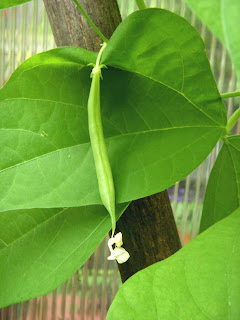 During a visit to the Brooklyn Botanic Garden two weekends ago, we came across a most unusual looking plant. The labels appeared misleading. I overheard a passerby reading aloud Narcissus "Ice Follies" from a nearby plaque as a possible ID. But I knew this plant was no daffodil. A label turned inside out read Moon Carrot, or Seseli gummiferum. Now that sounded quite likely. Yet upon further research, moon carrot, or Seseli flowers looked very different from what we have here, and nowhere was there any mention of the strange looking pods that were so very eye-catching. It just didn't compute.
During a visit to the Brooklyn Botanic Garden two weekends ago, we came across a most unusual looking plant. The labels appeared misleading. I overheard a passerby reading aloud Narcissus "Ice Follies" from a nearby plaque as a possible ID. But I knew this plant was no daffodil. A label turned inside out read Moon Carrot, or Seseli gummiferum. Now that sounded quite likely. Yet upon further research, moon carrot, or Seseli flowers looked very different from what we have here, and nowhere was there any mention of the strange looking pods that were so very eye-catching. It just didn't compute.An email message to the Garden Resource Center at the Brooklyn Botanic Garden yielded the answer, well within 24 hours, with a link to a plant forum in the University of British Columbia website. Our plant is Gomphocarpus physocarpus, one of which common names is the swan plant. So there you are - the swan plant, (or balloon cottonbush, or bladderbush, or wild cotton, and so forth.) But naturally, I favor the swan, and if you look closely at the flower, you may find the clue to the genesis of this more poetic common name. Briefly, according to that source, this is in the African milkweed family, and has apparently established itself in parts of the tropics, where the plant can be invasive. Fortunately, all it can be hereabouts is an annual.




















